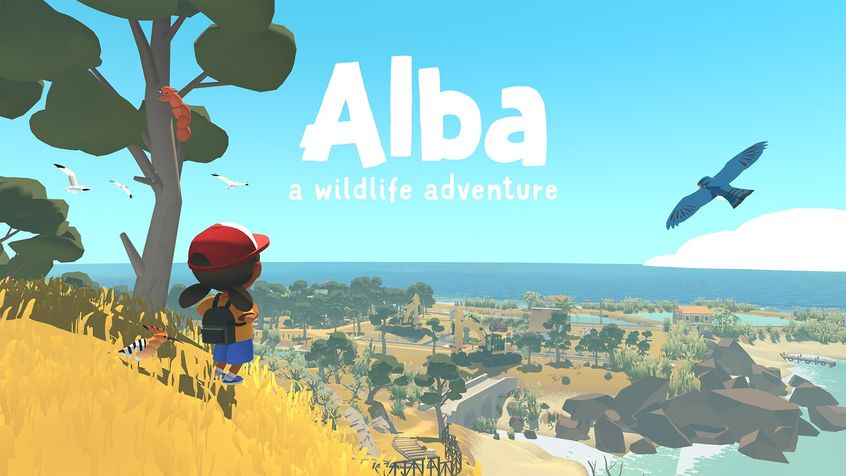Alba A Wildlife Adventure
A fundamental part of me playing games for these reviews is me pausing my play to take screenshots. The screenshots you see here are never all the screenshots I take, but I try to take screenshots of moments I think are illustrative of a point I want to make, or which make me laugh, or are just pretty. For most games, this process of taking pictures isn’t part of gameplay, though I think there are very few games that don’t in some way lean into the ability to take screenshots. However, there are some games for whom that ability to take pictures is integrated as a fundamental mechanic. I’d argue it’s an under-used mechanic, and a game like Alba: A Wildlife Adventure demonstrates why.
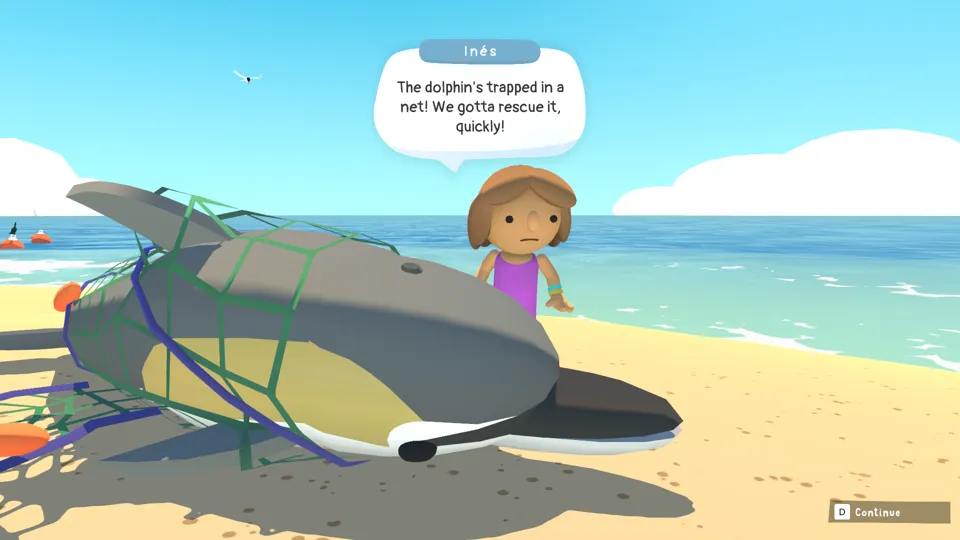 I’m pretty sure that dolphin could eat you.
I’m pretty sure that dolphin could eat you.
Alba is a casual adventure game, and one of the most genuinely wholesome games I have played in ages. You play as Alba, a little girl visiting her grandparents in a Mediterranean Spanish village. After rescuing a trapped dolphin and being given a guidebook to the island’s wildlife, Alba and her friend Ines resolve to stop the development of a new luxury hotel through revitalising the local townspeople’s love of wildlife and the natural beauty of the world around them.
The engagement with the natural world is the core mechanic of the game. In addition to interacting with objects like garbage or trapped animals, Alba also photographs the various critters she sees in her exploration of the island. Each new area that is unlocked is unlocked both to further the plot, but also to provide a chance to see a new creature, or get a better angle on a previously unseen creature. The game centers discovery and the thrill of getting a good photograph. This does an excellent job highlighting the beauty of the area and forcing the player to engage with the world around them.
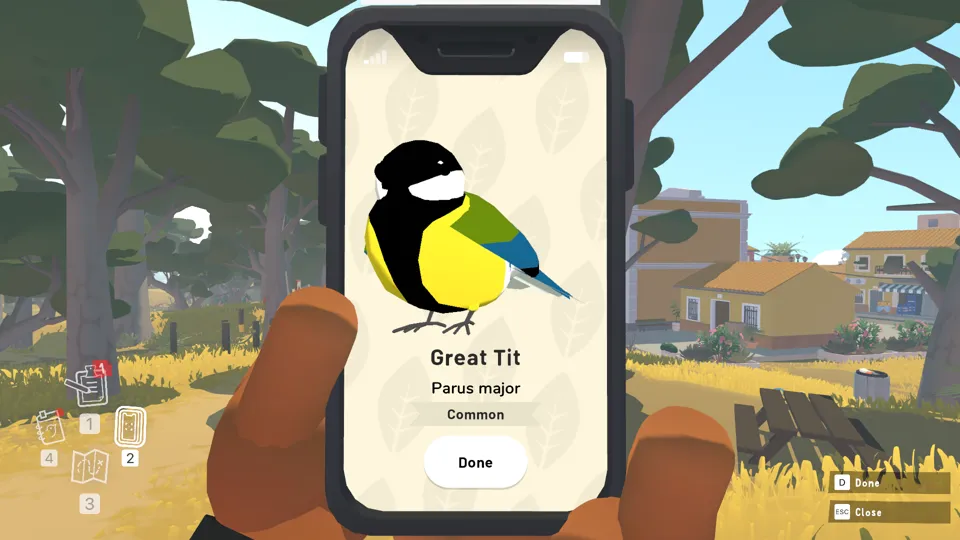 Just because the game is wholesome doesn’t mean that I am.
Just because the game is wholesome doesn’t mean that I am.
One of the interesting elements of including photography as a core game mechanic is the perspective it forces the player to take on the world around them. Immersion is critical in any game. A world needs to have at least some degree of believability or at least investment on the part of the player for the player to be interested in it. Without that immersion, the illusion that anything the player does matters vanishes, and the game ceases to be interesting. With RPGs like Mass Effect or Fallout: New Vegas, that immersion is created through letting the player fill in the character they’re playing, and propelling that character through a narrative. The world may be compelling, but it is compelling because of the story the player is telling in conjunction with it.
That strategy of immersion doesn’t work for a game like Alba. Here, beyond a few casual yes or no questions, the player has no real impact on who Alba is as a character. Alba is already fully formed by the time the player arrives, and we are along for the ride. Instead, Alba creates its immersion through inviting the player to experience the world alongside Alba and to discover the natural world with her. The story of the hotel and the various little adventures Alba embarks upon aren’t the point. The point is nature and our engagement with it, using Alba and her phone as a vehicle to get there.
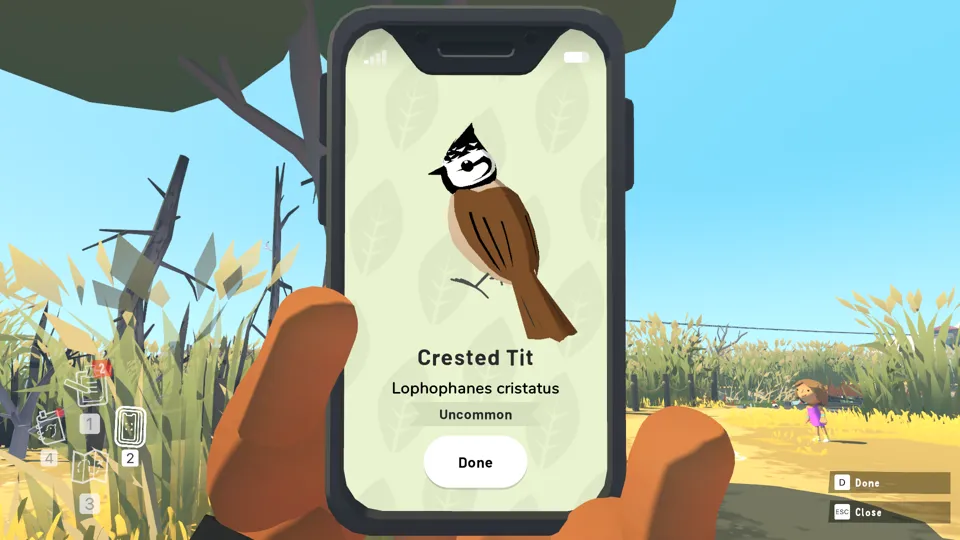 I am pretty clearly not a ten year old girl.
I am pretty clearly not a ten year old girl.
It’s in this context that the decision to center the game around a photography mechanic becomes brilliant. Whereas many exploration games take exploration on its own as a sufficient driver for player curiosity, photography adds an almost questing mechanic, asking the player not only to look, but to truly see the world around them. It isn’t enough to just go to the castle and look at the view. By asking the player to document the birds and mammals in the area, the game forces the player to take in more of the environment, drawing them in and giving them the opportunity to see the world as the critters might. On multiple occasions, I found myself scouring the sky, trying to see if what I was looking at might be the falcon I was looking for, or if it was yet another seagull. I was drawn into the world by the desire to fill up my little book with my photos, and to find all of the cute little creatures mentioned in it.
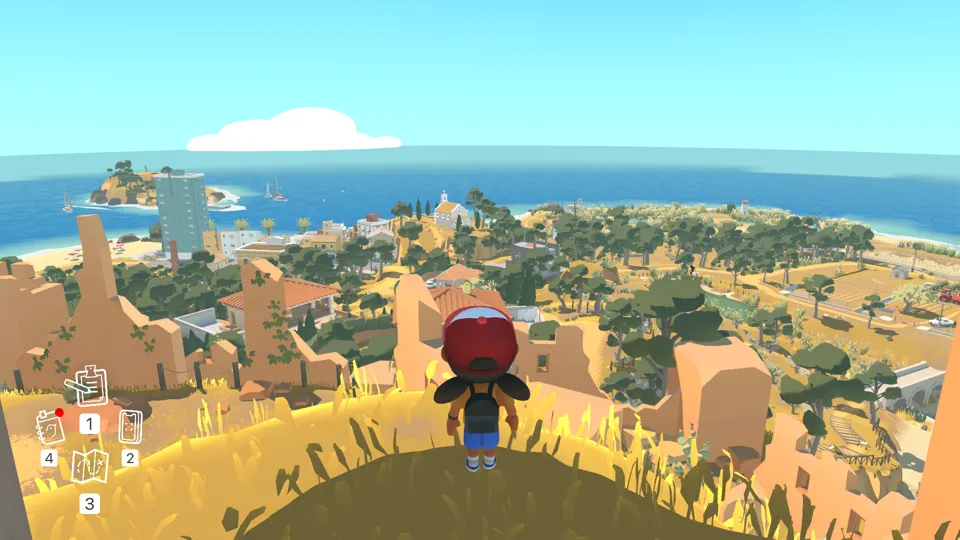 The exploration is pretty good too, though.
The exploration is pretty good too, though.
The true power and charm of Alba lie in how lovingly the world is portrayed. The island Alba explores is not real. There is no real island of Pinar del Mar with a quaint church, crumbling ruins, and shockingly poor chicken coop design. However, the creatures portrayed on the island are real. There are barn swallows and eagle owls, and yes, great tits, and they fill the skies above Spanish islands. Despite the cartoony graphics, these creatures are beautifully portrayed, and look surprisingly close to their real-life counterparts. The game’s fantastic soundscape is filled with their songs and conversations, creating an experience that is wholly devoted to these creatures and their world. However much this particular island is not real, the story it tells of the natural world being demolished by development and human apathy is very real. By centering the game on the creatures and their world, Alba makes the consequences of that reality hit home. It is a fantastic anthem to conservation, brought to life through a compelling mechanic - the player’s own desire to explore and understand.
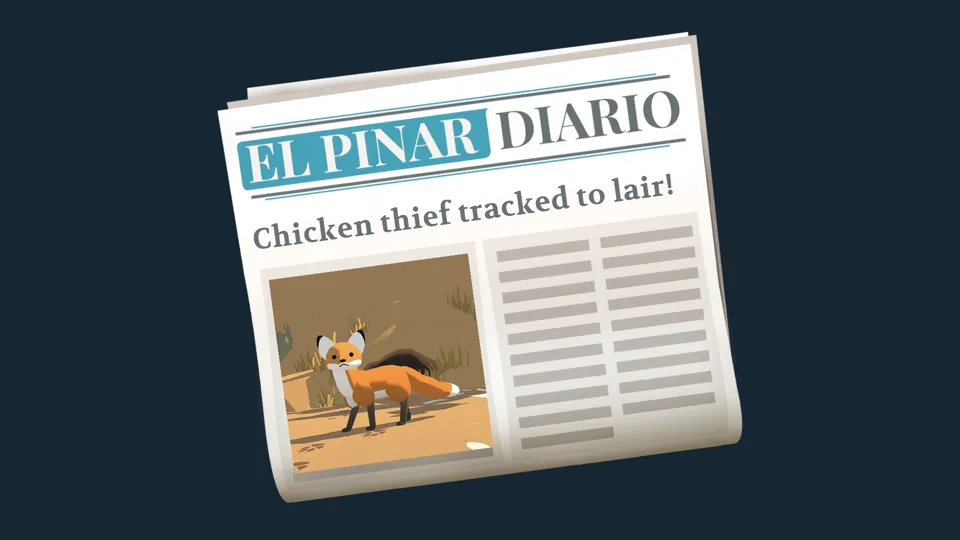 I think you’ll find that that is a fox thief, not a chicken thief. Unless it’s a particularly well-disguised chicken…
I think you’ll find that that is a fox thief, not a chicken thief. Unless it’s a particularly well-disguised chicken…
Alba is neither a complex nor a long game. It holds the player’s hand through quests, and does intend for its story to present much of a challenge. The challenge of the game is instead in finding all the creatures and photographing them. It’s in exploring and appreciating the world, and in seeing it through a new set of eyes. I finished it in three hours, and loved it the entire time.
Developer: Ustwo Games
Genre: Adventure, Indie
Year: 2020
Country: United Kingdom
Language: English
Play Time: 3-4 Hours
Youtube: https://youtu.be/BJNIW7S0xkI
